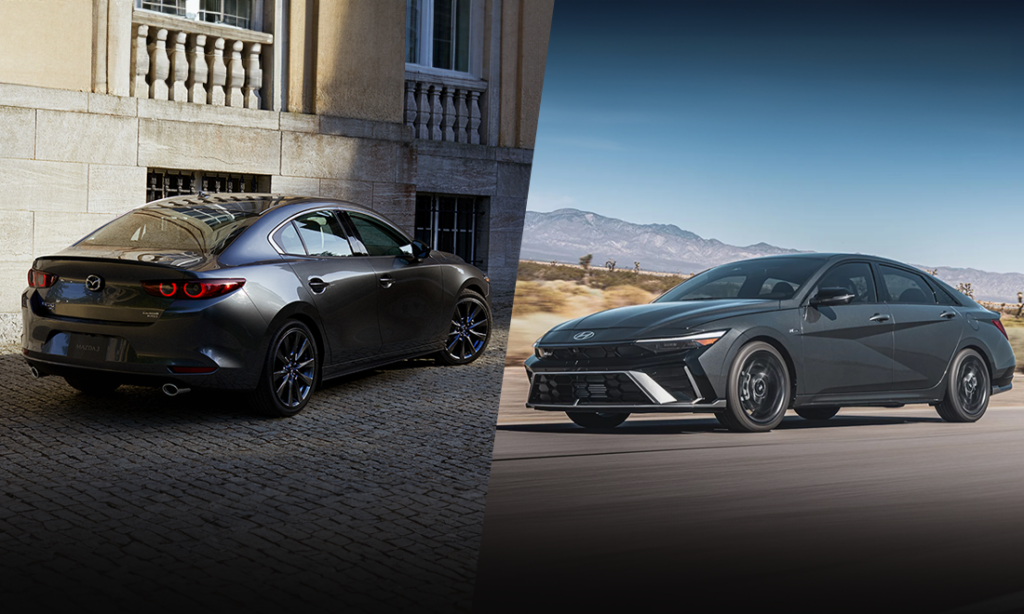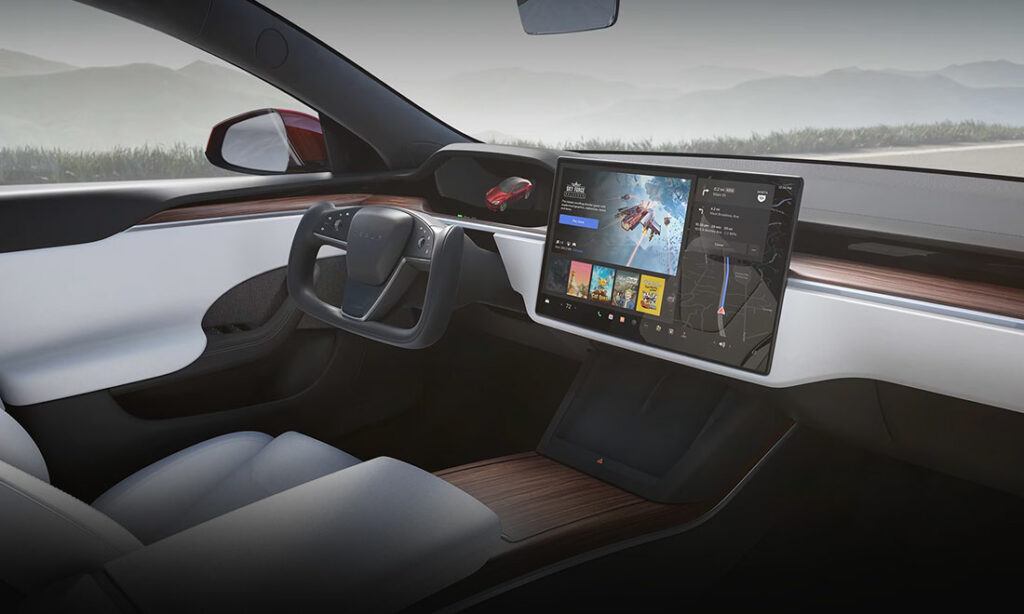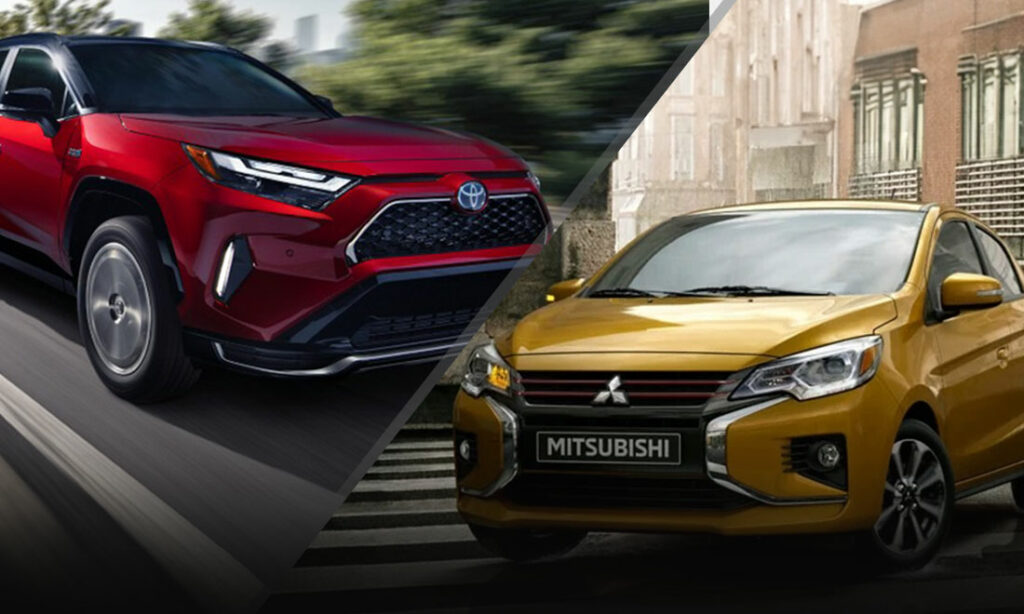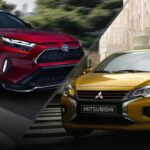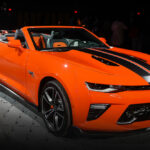Volkswagen Beetle Generations: Through the Years
One of the world’s most famous cars, the Volkswagen Beetle generations included initial success to a hiatus and resurgence to the final model.
A Small Car that Cast a Big Shadow
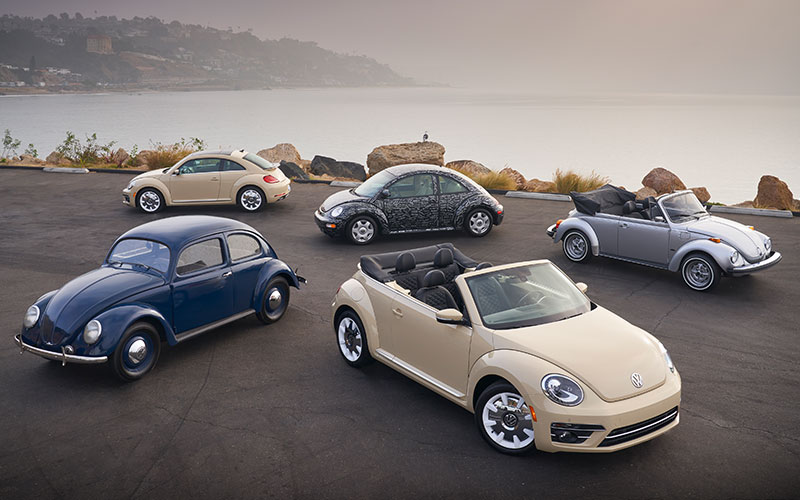
Volkswagen Beetle models – media.vw.com | Shop Volkswagen Beetle on Carsforsale.com
The concept of Volkswagen was simple: the people’s car (it’s literally what Volkswagen translates to in English from German). The Beetle was the model that made the concept a reality. Not only is it one of the most recognizable vehicles of all time, but it’s also one of the Best-Selling Cars Ever. From the first day of production to the last, more than 24 million Beetle vehicles were sold worldwide.
When Volkswagen decided to eliminate the Beetle from the U.S. and Canada in 1979, the little bug was still available in other countries. Production didn’t stop entirely. So far, though, the latest 2019 retirement has stuck. There aren’t any Beetles being produced for other countries. There aren’t any Beetles being produced at all. One has to wonder if Volkswagen will really keep the Beetle retired though. With an iconic name, a recognizable shape, a little bit of nostalgia, and some new features, could the Beetle help add a little momentum to the VW electric vehicle fleet?
Whatever the form, perhaps we’ll see the Beetle again. Until then, take a look back at the Type 1, the New Beetle, and the revamped 2012 Volkswagen Beetle. From special editions to engine changes to cinematic debuts, it’s all documented below!
1st Generation: Type 1 (1948-1979)
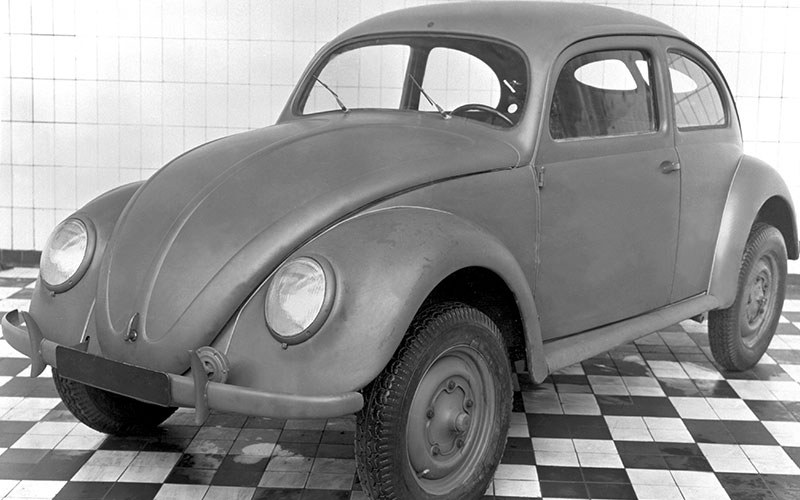
- The discussions about an affordable, practical car that could fit an average family and was capable of traveling on the Autobahn happened as early as the 1920s.
- Ferdinand Porsche was one of the designers who worked on the design of this rear-engine motorcar.
- Volkswagen started with the production of 210 Beetles using a military-style chassis.
- Production was limited, and then halted, over the next decade.
- It wasn’t until 1946 that an order for 20,000 Beetles was placed by the British government. Over 1,000 Beetles a month were being built by the British.
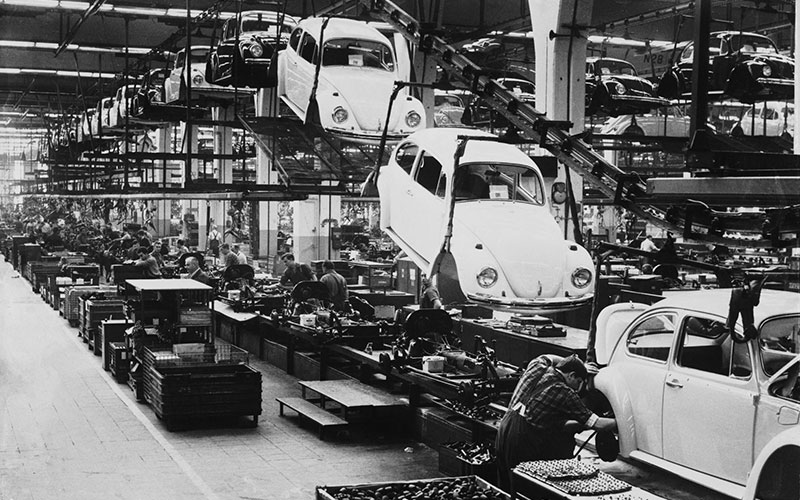
- In 1947, British civilians were able to buy their first Volkswagen Beetle models. They were powered by a 69 cu in engine that made 25 horsepower. This was still enough power to cruise at the vehicle’s maximum 60 MPH speed.
- It was in 1949 that the 1950 Volkswagen Beetle arrived in the United States.
- The standard two-door Type 1 Volkswagen Beetle cost $1,280 in 1950.
- A cabriolet, or convertible, was also available.
- By that time the air-cooled 1.6-liter flat four-cylinder engine made 34 horsepower with a four-speed manual transmission.
- The rear-wheel drive (RWD) bug got 36 MPG.
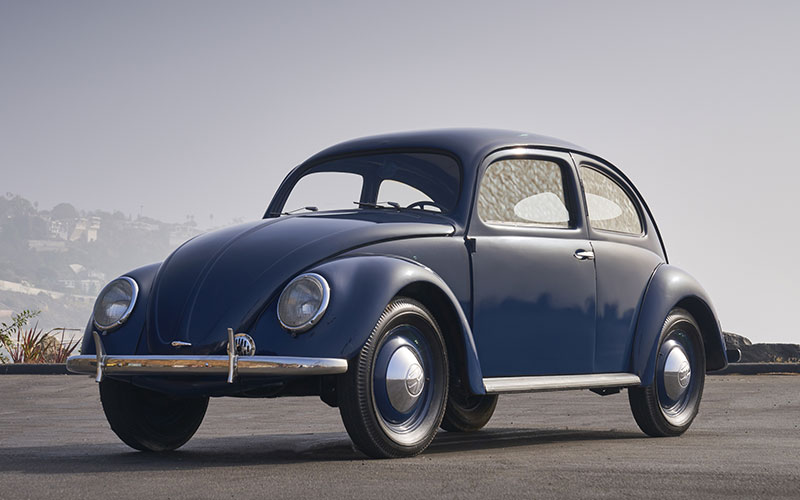
- It could fit five passengers.
- Rear windows were made into a split design, and the front windshield was completely flat.
- Volkswagen tried to capitalize on the success of the Beetle throughout the 1950s and 1960s, considering more than 70 potential vehicles as replacements for the Beetle. Some of them included the EA-47-12, the 1955 EA48, the 1960 EA97, the 1961 Type 3 Cabriolet, and the 1969 EA266.
- During the 1950s, optional hydraulic brakes were added to the Volkswagen Beetle.
- The rear window design was altered into a single oval shape instead of the split design it had before.
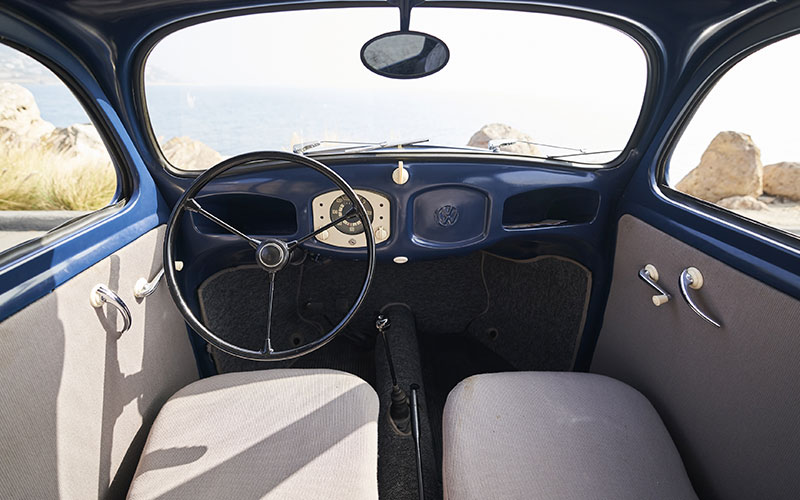
- The instrument panel was updated for the 1953 Volkswagen Beetle.
- The 74 cu in engine inside the 1954 Beetle increased the vehicle to 36 horsepower.
- Separate brake lights were changed to a combined tail light for the 1955 VW Beetle.
- Production ramped up immediately with the one-millionth model rolling off the assembly line by 1955. To mark the occasion, a Type 1 Beetle was painted gold and the bumpers were bejeweled with rhinestones. Nearly 150,000 people gathered in Wolfsburg, Germany for that moment.
- The one-millionth Beetle is now in Wolfsburg’s AutoStadt Museum.
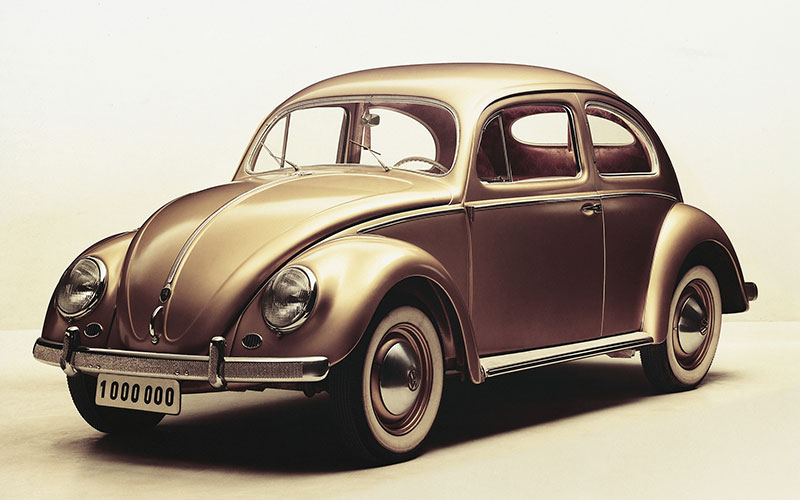
- Volkswagen updated the rear outside of the 1956 Beetle with twin chrome tailpipes and bigger bumper guards.
- The rear window became rectangular in the 1958 model.
- The same model also updated the instrument panel.
- A hydraulic damper was added to the 1960 Volkswagen Beetle in order to improve steering.
- Volkswagen made a semi-automatic transmission available in the 1961 Volkswagen Beetle. It had an electromagnetic clutch.
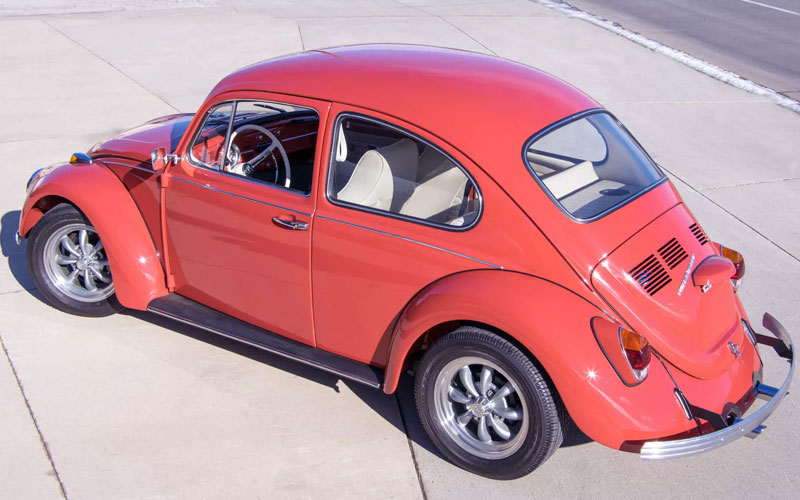
- The Volkswagen Beetle was a favorite in all kinds of race competitions, from drag racing to rallycross to the Baja 1000. It was in 1963 that American race car driver Dan Gurney decided to take a 1956 Beetle into the racing world. He customized it with enough Volkswagen performance parts to race it in a number of Grand Prix events all over the world, from France to the Bahamas to Brazil.
- Other racers, like Formula 1 legend Emerson Fittipaldi, followed suit. He took a 36-horsepower Beetle and transformed it into an energetic ride with a 3.2-liter eight-cylinder engine and five-speed manual transmission.
- While racers were outfitting Beetles, Volkswagen was continually making changes to the popular motor vehicle. The 1965 Beetle saw a few significant body style changes including a slim curve in the front windshield and larger windows everywhere else.
- A new standard engine was introduced in the North American models of the 1966 Volkswagen Beetle. This 78.4 cu in engine provided 50 horsepower.
- Then, a 91.0 cu in 53-horsepower engine was used in the 1967 Beetle. The generator and electrical systems were also improved in this model. The generator went from producing 180 watts to 360 watts, and the electrical system went from making 6 volts to 12 volts.
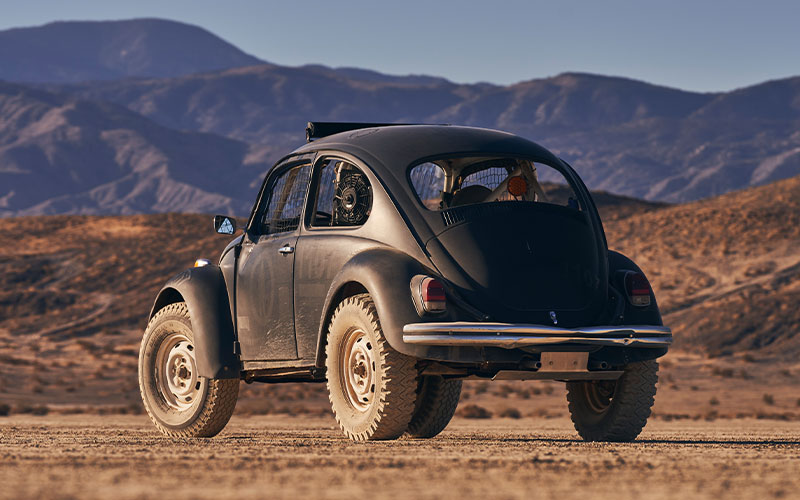
- Volkswagen saw such demand for the Beetle that they opened a plant in Mexico in 1967 to help with production.
- Since so many Volkswagen Beetles were made in Mexico, the Beetle became a favorite in there, too. It was used as a family vehicle for adults and teenagers alike.
- In Mexico, the Beetle, or ‘Vocho,’ as it was affectionately called, was the model used as taxicabs for decades. If you hailed a taxi in Mexico, a green and white colored Volkswagen Beetle would be the vehicle pulling over to pick you up. Learn more about the Volkswagen Beetle era of taxicabs, and why that changed, by reading our article on The History of Taxicabs.
- As more safety standards were introduced in the United States, more safety features were added to the Beetle. The 1967 model added a side mirror on the driver’s side of the vehicle. Two-speed windshield wipers were also added.
- Bumpers on the 1968 Beetle were mounted higher, and tail lights were made even larger so that reverse signal lights could be added. The gear shifter was shortened, outside door handles became trigger-equipped, and high-backed bucket seats were added.
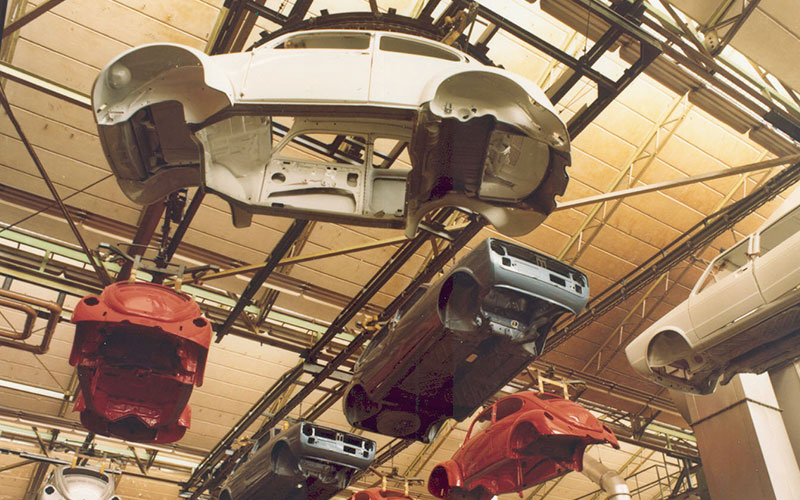
- It was during the 1960s that the Volkswagen Beetle became a pop culture phenomenon in the United States, representing all kinds of people along the way. The 1968 Disney movie, Herbie: The Love Bug, featured an anthropomorphic 1963 model Beetle. Herbie was capable of driving himself, entering race competitions.
- Herbie evolved into sequels, a television series, and a reboot. One of the 1963 Beetles used in the 2005 remake is now on display at the Volo Museum in Volo, Illinois. You can read more about the original movie and its impact in 10 Fun Facts About Herbie: The Love Bug.
- The Beetle was also a popular vehicle of choice for those attending Woodstock music festival in 1969. Hundreds of VW Beetles and VW Buses were decorated with colorful, painted flowers, symbols of peace, and words like, ‘Love.’
- Meanwhile, Volkswagen continued making changes to the Beetle. The 1969 Beetle actually had a heated rear window. Other improvements included a semi-trailing independent suspension.
- A new L Package was introduced in 1970. This top-of-the-line Beetle introduced dual rear ashtrays, carpeting throughout the vehicle, a passenger-side visor mirror, twin map pockets, and rubber bumper moldings. The 91.0 cu in engine was enlarged to 98 cu in, making 57 horsepower and 82 lb-ft of torque.
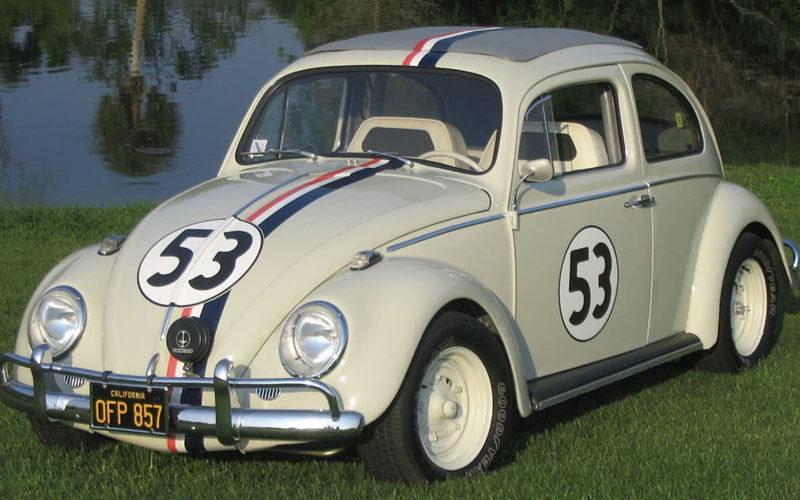
- Another change occurred in 1971. Two Beetles were available for the first time, one being the standard version and the other being a larger model. This version was badged as the 1300 S. The Type 3 Beetle had VW 1600 badges at the time. The larger 1300 S offered 4.3 cu-ft of additional luggage capacity in the front of the car.
- The rear window was made even larger in the 1972 model. The steering wheel was also changed to four spokes. Windshield wipers could be controlled by flipping a switch attached to the steering column instead of with a knob on the dash.
- Additional safety regulations affected the performance of the 1974 Beetle. Energy-absorbing 5 mph-impact bumpers affected the handling and stability of the vehicle.
- 1975 brought a few more changes. This model added fuel injection, a muffler, and a catalytic converter in California. The twin tailpipes became one, also.
- New front seats with separate head restraints were introduced in the 1977 Volkswagen Beetle.
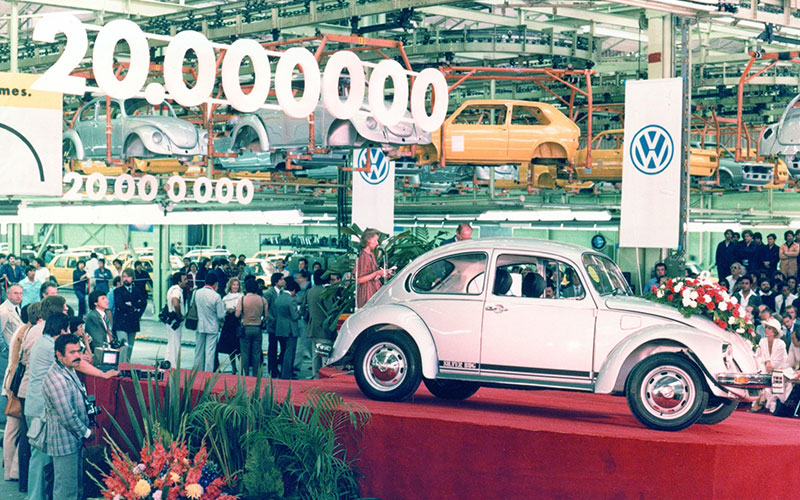
- The convertible version of the Beetle ended worldwide production in 1979.
- Sales in the United States and Canada ended with the 1979 model, but the Volkswagen plant near Mexico City continued producing vehicles.
- The 20-millionth Beetle was produced in 1981 at the Puebla plant.
- The Beetle was produced for European markets through the 1985 model year, though other countries continued importing the models that were manufactured in Mexico.
- Brazil ended Beetle production in 1986, resumed production in 1993, and then discontinued it again in 1996.
- The last first-generation Beetle was produced in Mexico in July 2003. Around 3,000 models were sold as 2004 Volkswagen Beetles with whitewall tires and the choice of two paint colors.
2nd Generation: The New Beetle (1997-2010)
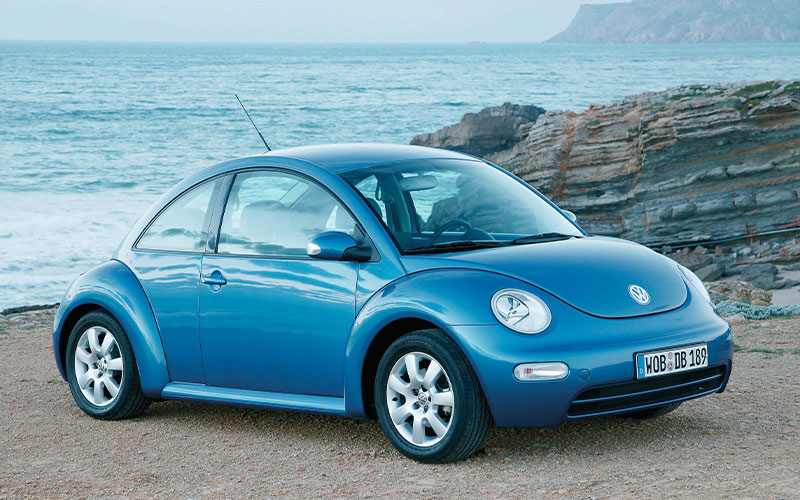
- The Beetle name was revived in 1998 with a rounded, retro-themed, Golf-based New Beetle.
- The concept was introduced at the North American International Auto Show in 1994, and it was approved in 1994, but there was a 22-month design freeze after that. A receptive public convinced Volkswagen to go ahead with the New Beetle idea.
- Made in Mexico, just like the original Beetle, the New Beetle was larger than its predecessor, and also utilized a front-engine design. A rounded roof, round tail lights, round headlights, and separate fenders made it easily identifiable as a VW Bug.
- While the Beetle looks small, the cabin could fit six-foot passengers without a lot of discomfort.
- The dash housed AM/FM controls, a cassette sound system, and a unique clear vase mounted to the dash for anyone who wanted to place a flower there.
- This adaptation of a classic included a 115-horsepower 2.0-liter four-cylinder engine that was water-cooled. A 1.9-liter TDI diesel four was also available.
- The 1998 Beetle was available in FWD.
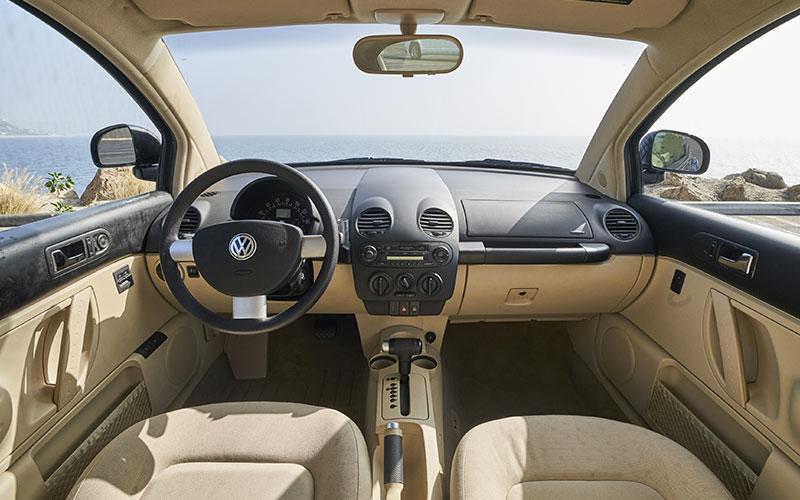
- A year later the 1999 Beetle included another engine option: a 150-horsepower turbocharged 1.8-liter straight-four for Sport models.
- Just as the previous Beetle was a star, so was the New Beetle. It was featured in commercials, movies like Austin Powers, and video games like Beetle Adventure Racing for Nintendo 64.
- Limited-edition 2001 Volkswagen Beetle 250 RSi models were built for European customers. These cars generated 221 horsepower and 162 lb-ft of torque with a 3.2-liter V6 engine and six-speed manual transmission. They were all-wheel drive vehicles, too.
- The Turbo S model was available beginning in 2002. It made 180 horsepower and 173 lb-ft of torque with a 1.8-liter turbocharged four-cylinder engine paired to a six-speed transmission. It had a top speed of 131 mph.
- This Beetle had a sport suspension with aluminum interior trim. The Turbo S models had retractable rear spoilers, too.
- A convertible was added to the 2003 Volkswagen New Beetle lineup.
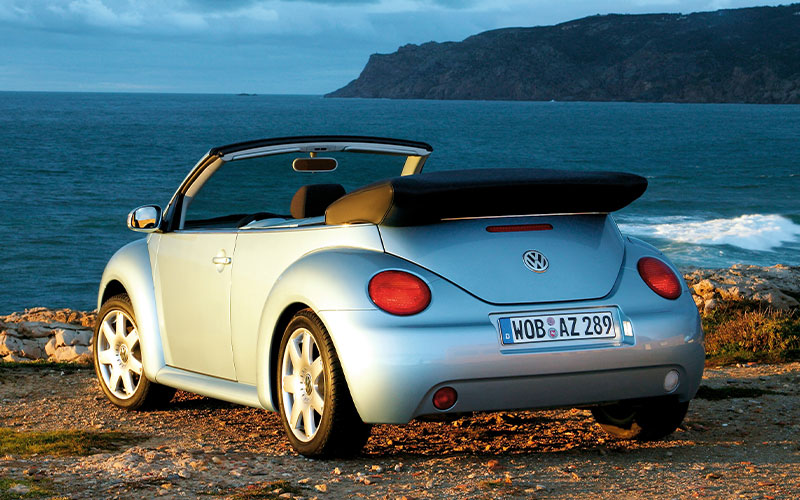
- Eight years after the New Beetle debuted, Volkswagen gave the favorite a slight redesign. Creases were added to the fenders, the wheel wells became more angular, and the front fascia had more of a boxy look.
- The 2006 Volkswagen Beetle was fitted with a 2.5-liter five-cylinder engine that made 150 horsepower and 170 lb-ft of torque. It was also used on the Volkswagen Rabbit and Volkswagen Jetta.
- The diesel TDI option was discontinued from the lineup.
- Minor updates to the 2008 Volkswagen New Beetle included changing trim level names to the S and SE.
- The 2009 New Beetle couple and convertible models were only available in one trim level with one engine option: the 2.5-liter inline five-cylinder. It still produced 150 horsepower and 170 lb-ft of torque.
- A final year, yet again. The 2010 model was the final year of production for the Volkswagen New Beetle. Two special editions were offered, but, other than that, it was a mostly unchanged vehicle.
3rd Generation: Volkswagen Beetle A5 (2012-2019)
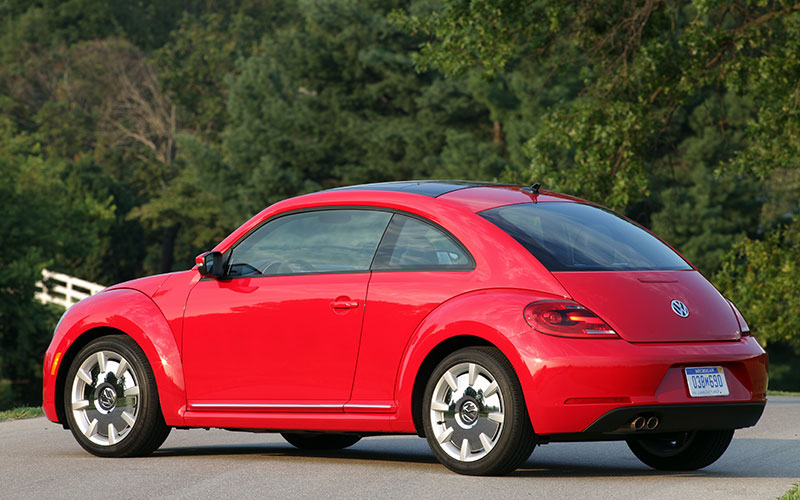
- Volkswagen gave the Beetle yet another transformation starting with the 2012 Beetle. It was completely redesigned, though this wasn’t as drastic a change as the Type 1 to the New Beetle.
- The 2012 Beetle had a visibly more aggressive style. Though it maintained many styling elements of the New Beetle, it had a lower profile, like the Type 1 Beetle.
- The 2012 Volkswagen Beetle 2.5L had, as you may have guessed, a 2.5-liter five-cylinder engine. The revamped engine made 170 horsepower and 177 lb-ft of torque, increased from the previous 2010 model. A five-speed manual transmission was standard, but a six-speed automatic was also available on all trims except the base. All 2012 models were FWD.
- The 2012 VW Beetle Turbo had, as you’d expect, a turbocharged 2.0-liter four-cylinder engine. This one made 200 horsepower and 207 lb-ft of torque, paired to a six-speed manual or optional six-speed automatic.
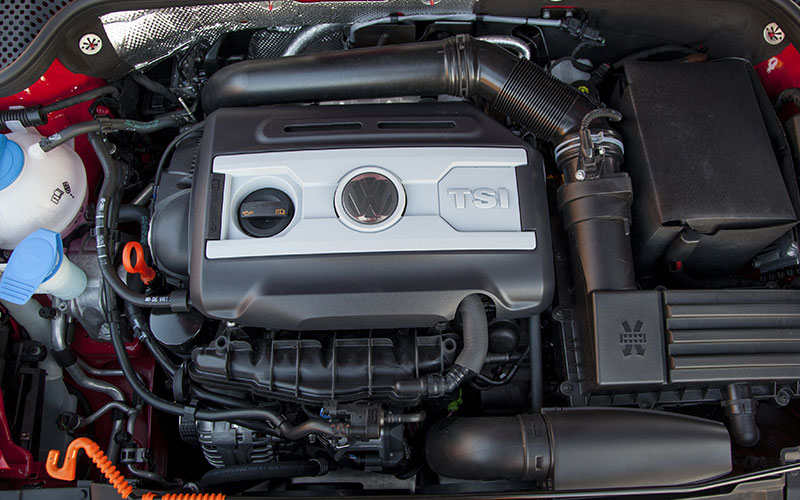
- The 2012 lineup was strictly available as a coupe. No convertibles in Beetle form … yet.
- A soft-top convertible was introduced with the arrival of the 2013 Volkswagen Beetle. So was a 2.0-liter turbocharged diesel which could put out 140 horsepower and 236 lb-ft of torque. Buyers could choose between a six-speed manual transmission and a six-speed Direct Shift Gearbox dual-clutch.
- A yellow and black color scheme was used on a limited-edition 2014 Volkswagen Beetle GSR model, giving off strong racing vibes. The 2014 Beetle Turbo was changed to the Beetle R-Line. It was the 2014 Beetle lineup that introduced a rearview camera, too.
- There weren’t major changes to the 2015 Volkswagen Beetle, but drivers of the bug could appreciate 10 additional horsepower in the optional 2.0-liter diesel. It now delivered 150 horsepower (and same 236 lb-ft of torque as before).
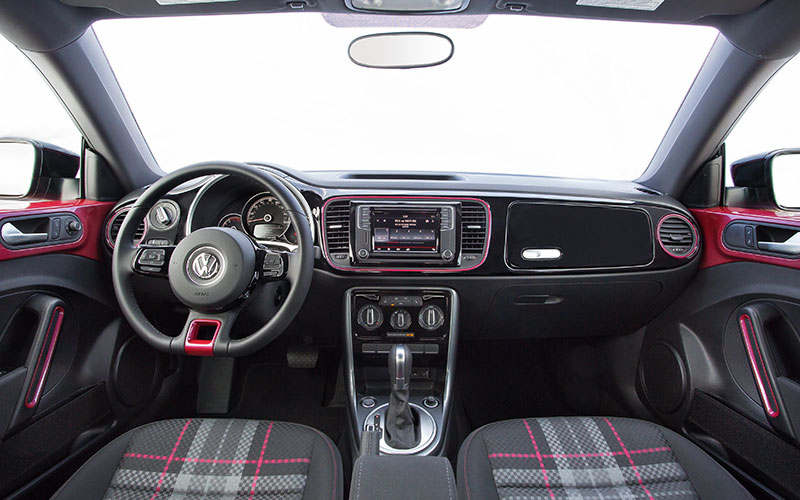
- No big updates were made on the 2016 Beetle either, but several trims were offered: the Wolfsburg Edition, the S, the SE, and the SEL.
- The R-Line coupe was available in SE and SEL trims while the convertible was offered as a S, SE, or SEL. Two special editions included the Denim convertible and the Dune coupe. Those models added special seat material and unique styling like special wheels.
- The 2017 Beetle introduced another special edition: the #PinkBeetle, which was a pink colored Beetle with special pink stitching on the seats and pink trim in other parts of the cabin. Trim levels were changed to the 1.8T S, the 1.8T Classic, the 1.8SE, the 1.8T Dune, the 1.8 SEL, and the 2.0T R-Line SEL.
- Now six years into its latest run as the Volkswagen Beetle, the 2018 model made a few changes. It eliminated all engine options other than the 2.0-liter four-cylinder. This change was made across the lineup.
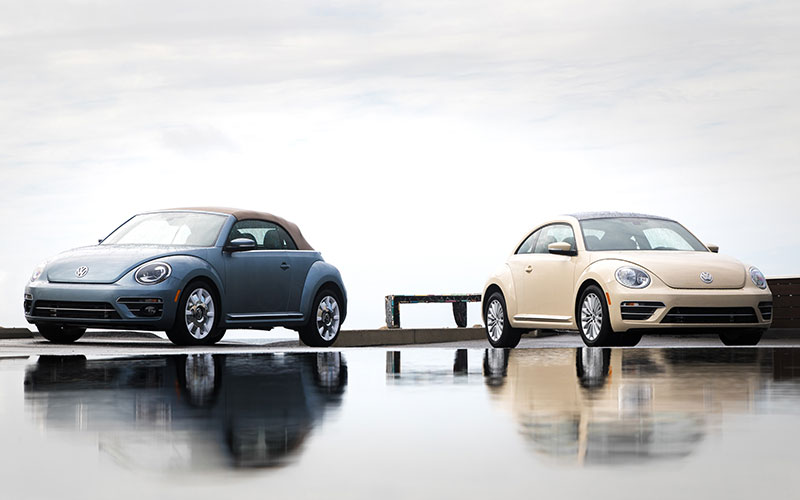
- Volkswagen introduced a six-year warranty included with the purchase of any new Volkswagen vehicle. This applied to the 2018 Beetle as well.
- Volkswagen retired the Beetle (again) in 2019, 70 years after the first one arrived and was sold in the United States.
- To commemorate the occasion, Volkswagen offered the final model in two colors: Safari Uni Beige and Stonewashed Blue. Both were in tribute to previous Beetle models.
- The 2019 Volkswagen Beetle was available as coupes or convertibles.
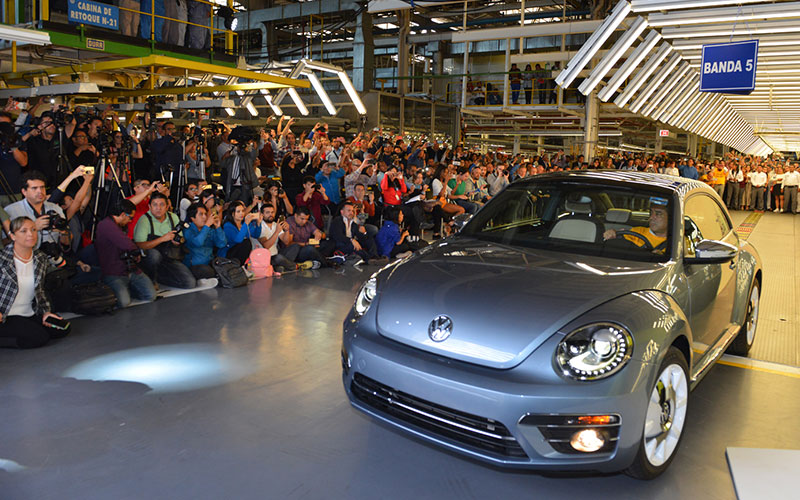
Last Production Beetle – media.vw.com | Shop Volkswagen Beetle on Carsforsale.com
- The last Beetle rolled off the Volkswagen de Mexico’s Puebla plant in July 2019. It was placed at a local Puebla museum.
- Even though the Beetle isn’t in production anymore, there are still dozens of years’ worth of models to find for purchase.
- There are also fun articles to help keep the Volkswagen Beetle alive. For example, we did a head-to-head Volkswagen Beetle vs Mini Cooper comparison.


